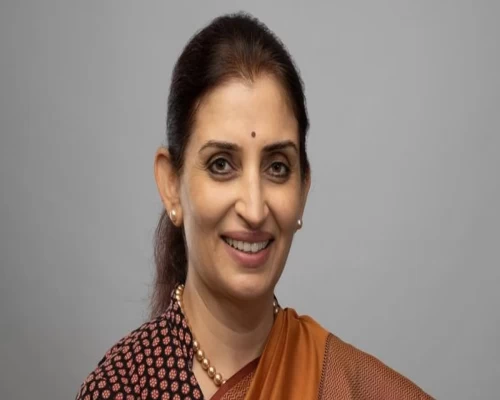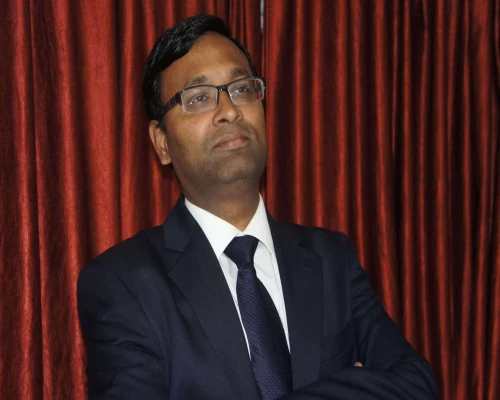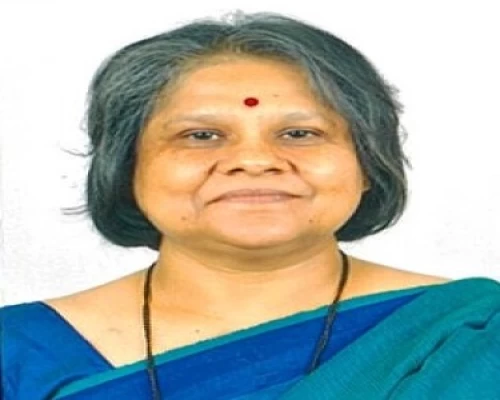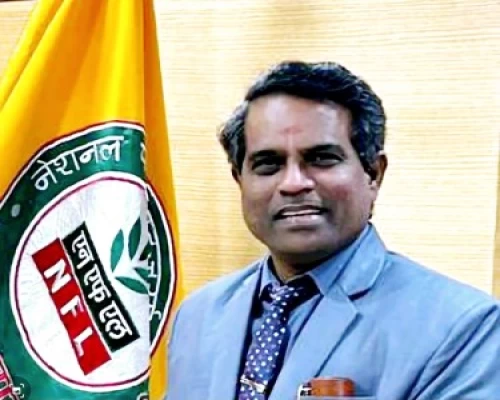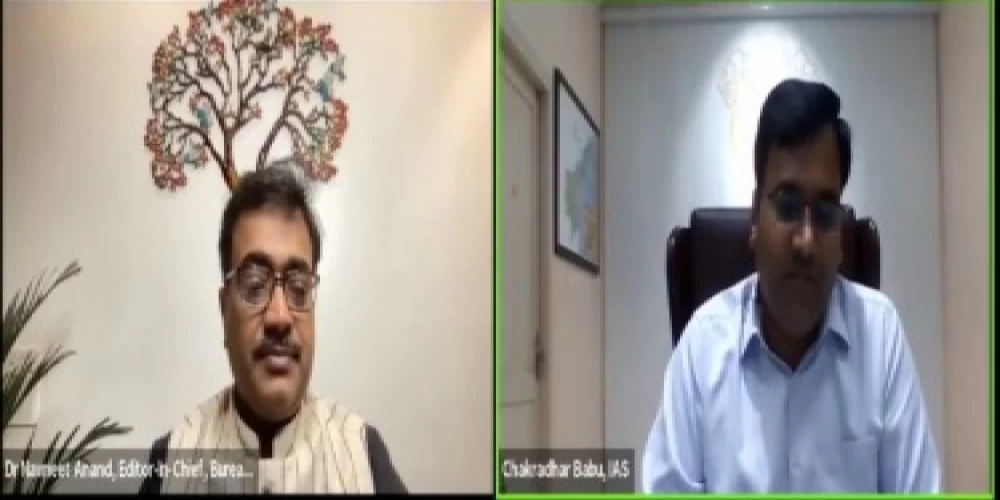
Nellore: KVN Chakradhar Babu is a bureaucrat by profession and a learner by passion. A 2011 batch IAS officer, he is currently posted as District Magistrate (DM) Nellore, Andhra Pradesh. Equipped with degrees in various subjects, Babu has done remarkable work in various capacities including handling two waves of Covid-19 and multiple cyclones. He has taken some key steps in water management. He has received National e-Governance Award, Award for Excellence in Public Administration by Andhra Pradesh Chief Minister YS Jaganmohan Reddy, the National Award for the Best District in the implementation of PM Kisan Yojana, the National Award for the Best District in PMAGY’s implementation, and the National Award for Aadarsh Panchayats. In an exclusive conversation with Bureaucrats India Editor-In-Chief Navneet Anand, Babu talks about his journey and milestones achieved so far. Read His Full Interview Here:
How do you use your various degrees during the job?
I always had a keen interest in reading. Whenever I had time in school I was found in the library. Even now whenever there is a good course, I pursue the same through distance education. After becoming an IAS officer, I thought of specialising in a few sectors. Knowledge about fields is important as an administrator since each field has various nuances and technicalities that must be understood. The power management course I did was especially very relevant during my stint at the Transport Department. Doing a degree in public policy was also very relevant. Having to pass so many orders everyday, I wanted to ensure my orders have no loopholes. Formal courses in various sectors helped me hone my skills and become a better officer.
Nellore became the first district in the state to complete vaccination for children between 15-17 years. Tell us about this achievement!
The day I was posted as DM Nellore, the first wave of Covid-19 was underway. People were suffering. There were instances where people were dying for lack of beds. We imposed a lockdown selectively, handling the containment zone. We roped in 600 companies to help citizens under the CSR. After rigorous efforts from the team, Nellore now is comfortably placed in combat Covid-19. Since then, Nellore has had the best indicators, as we have 6.81 lakh tests per million and a total positivity rate of 1.3%. The vaccines are paramount to curbing the spread of the virus.
When the vaccination was started, we first focussed on healthcare workers. I was the first person to take the jab in the district. This encouraged a lot of people to come forward and take vaccination. Roadblocks were experienced as healthcare workers, doctors, paramedics, and other frontline workers were apprehensive about taking the vaccine. In order to address these issues, meetings were held over Zoom having experience sessions where top scientists explained how the vaccine worked and their own personal experience with the same. These sessions were further conducted for pregnant and lactating women, and 60+-year-old people with chronic illnesses, stating why the vaccine was crucial and that they were safe.
From the stage of inhibition to acceptance, we have come a long way in the vaccination journey. We also roped in religious group leaders to encourage the people to take vaccination. Every Sunday we had vaccination camps for migrants. Similar strategy was adopted for children between 15-17 years. We reached out to schools, hospitals, and parents of children. And we were able to complete the vaccination within three days.
There is a great difference in administrative practices between officers in the past versus IAS officers in the present. How do you view this paradigm shift?
In my own experience as a young college-going student, I faced issues with government officials, due to the information asymmetry, discretion, and delay in operations. Through these experiences as a child, I realized that when I become a service provider, I want to provide the kind of treatment I would have appreciated, making everything more citizen friendly.
I have attempted to bring positive change to whichever department I have worked at, E-governance is one such example. I try to computerize various practices and processes, making government to citizen interaction easier. E-services have been made user-friendly ensuring that they need not come to the government offices to have their work done, ensuring accountability and responsibility by the government.
As the Joint Collector, Srikakulam, I took over the task of completing the long pending task of rehabilitation and resettlement (R&R) of the Vamsadhara project designed in 1969 and started in 1975. The land acquisition was completed after three decades in 2009 but the R&R remained incomplete for 10 years. My first task was to codify all the processes and prepare the documentation. Through the decades of work, and resulting masses of information generated, I used technology to compile coherent databases to ensure proper functioning and implementation of the program. All the land acquisition and R&R processes were integrated seamlessly into an online process. The initiative was given the National E-Governance award in 2019. 35,000 people were rehabilitated. There was no law-and-order involvement in the process and with no middleman, people felt more comfortable moving to their assigned R&R colonies. So, the paradigm shift from being suspicious to viewing the administration as someone who is a part of their family was a huge accomplishment.
You have taken up the task of increasing the literacy rate in your district. What is the outcome?
The total literacy campaign has started in saturation mode. A database was formed of 1.34 lakh people who are non-literates, and they have since gone through simple classes over the past three months. Evaluation tests have begun, and it is expected that 1 lakh people would pass the exams, putting the district in the top 10 for literacy, from 67-68% to 90-94%. With the use of technology, we were able to bring positive change to people’s lives.
Floods in the Penna river wreaked havoc in Nellore. How was that managed?
It was an unprecedented situation. Nellore is a dry region. We generally have drought, hence dealing with such an unseen situation was hard. Nellore faced heavy downpours and floods from 19th to 29th November’21 and about 200 TMC floods. All the water had to be emptied into the sea with 7,000 people on duty. The police, department, NDRF, and SDRF teams were called in to help. 8,000 people were rescued from within the water using boats and machines like JCBs, tucks, and tractors. The coast guard, navy, some expert fishermen, and naval helicopters were used to rescue people from remote areas.
Aside from the enormous task of rescuing, we also had to rehabilitate 38,000 people from low lying areas. A control room was set up at the district headquarters, and once again, technology proved to be greatly beneficial in saving lives. Technology was used to get forecasts on the weather with the help of the central water commission, ISRO Shriharikota centre, and the Indian Meteorological Department, with which we could foresee where the water was headed. Flood maps were made for all the river basins. Massive evacuation drives took place, where 50,000 families were given special assistance under relief. With the immense effort put in, not a single life was lost. Every affected family was given a relief and rehabilitation package, and 650 houses were sanctioned which are under construction now.
How was the people’s reaction?
When asked to evacuate, people did not want to believe that the area was about to be flooded. In an effort to convince them, markings were made on their houses and were explained how by the next morning, the water levels would reach a certain level, showing how high they would go. There had to be extra effort put into making people realize that evacuation was for their own good.
We used the traditional knowledge of the head men of villages and convinced them to vacate villages. Their apprehensions were along the lines of losing their belongings, valuables, and their cattle. As a result, arrangements were made for the safe deposit of their money and other valuables with banks, and the cattle were moved to cattle hostels. As the people’s concerns were met, they felt satisfied to leave their homes, and by the morning when the village ended up flooded, they were convinced that the administration did all this for their own good. These people were kept in rehabilitation camps for 4 days where they were given medical and health facilities, food, water, and other necessities, and were sent back to their villages after the water receded.
You managed the election during Covid-19. How was that experience?
After the sad death of the honourable sitting MP, a by-poll was announced during the second wave of Covid-19. It was a challenging task. The Election Commission had released a new set of instructions for conducting elections during Covid-19. People had to be trained according to the new guidelines to make them COVID compliant. Additional 1,400 stations were set up to ensure proper social distancing.
All the people assigned to election duty had to be vaccinated and were given proper equipment such as masks, sanitizers, and other protective equipment to ensure no one got infected. As it is a fundamental right as a citizen to be allowed to vote, even people who were COVID positive were not left out. An extra hour was given to people who were COVID positive so they could vote; special ambulances were mobilized to bring these infected individuals to the venue, and doctors were supervising them.
Postal ballots were arranged for people who required them, where polling personnel personally visited people’s houses, set up temporary voting compartments within their houses, and the whole process was video recorded. 300 counting halls were set up with only six to seven counting tables in each, and the counting personnel were given protective equipment to ensure the virus does not spread. These practices that were set up specifically for the COVID times were adopted by other states as well.
How did you manage to keep your staff motivated?
Communication was the key. There were times when our staff didn’t go home for days. We ensured that they are heard. We had set up a grievance redressal mechanism for our staff. Every Monday was dedicated to listening to their grievances. This helped us a lot during the difficult times. Their welfare was always taken care of. Acknowledging and solving one’s own issues made people more humane and empathetic towards others while addressing their issues.


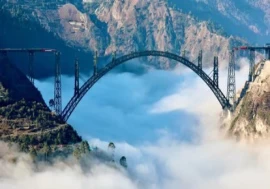

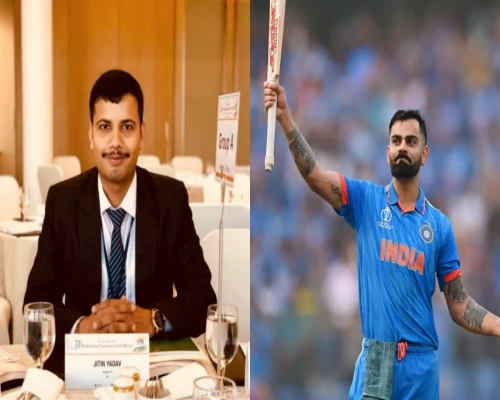
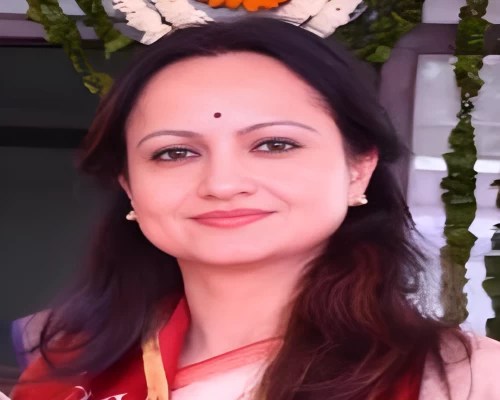
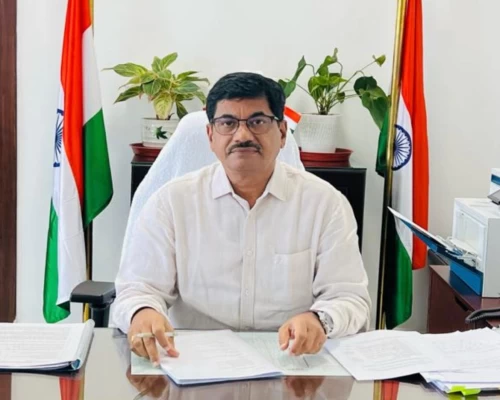
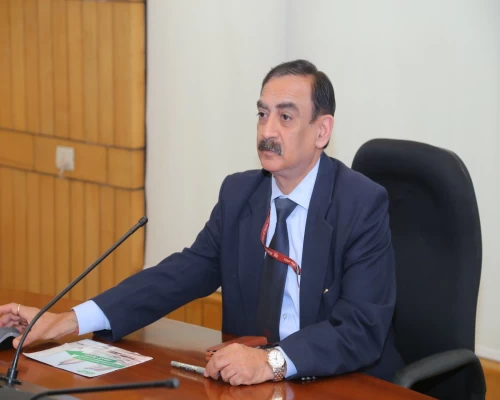
_500_x_400.webp)
